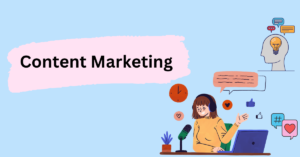Online shopping can be a busy and fast-paced world; sometimes it is hard to capture those people. Many abandon shopping carts or just leave websites without making the purchase. That is where retargeting comes in, re-engage with users who have shown interest in your products but haven’t completed the purchase.
Retargeting is one of those powerful digital marketing tactics that aids e-commerce businesses increase their conversion rate, recover lost sales, and boost brand awareness by serving targeted advertisements to users who have engaged with your website. The following blog outlines some of the best retargeting strategies for an e-commerce business in 2024.
1. Segment Your Audience for More Precision:
One of the initial steps in designing a successful retargeting campaign is audience segmentation. Obviously, not all website visitors are the same, and thus dividing them into more specific groups helps display even more relevant ads. The campaigns seem more individualized and increase the likelihood of a conversion.
Common audience segments for e-commerce retargeting include:
– Cart Abandoners: Users who added items into the shopping cart but failed to complete the sale. Such customers are closer to conversion, thereby making them excellent targets for retargeting. – Product Viewers: People who viewed product pages, without adding anything to the cart. These users need further information or reassurance before deciding.Revisiting visitors Visitors who have revisited your website multiple times but haven’t bought from you. They are looking at other options and require a nudge. – Existing customers People who purchased from you before but can still be prompted to buy again. Retarget them with cross-sell or upsell opportunities. Strategy Example: For cart abandoners, show them adverts with exactly the products they left with an offer such as a discount or free shipping to encourage them to complete the checkout process.
2. Dynamic Retargeting Ads:
Dynamic retargeting will be the “game-changer” for e-commerce businesses. Instead of delivering general ads, these dynamic ads use the user’s browsing behavior to display individualized recommendations of products. Consider an example where the user has viewed a pair of sneakers on your website; he or she will see that pair of sneakers as they browse through other websites or social media platforms.
Dynamic ads can be very effective because they remind the potential customer of exactly which products they are interested in, keeping the product fresh in their minds and enticing them to return.
3 Implementation: Dynamic retargeting:
– Facebook and Instagram Dynamic Ads: Using these products will connect your product catalog to your ad campaigns, automatically pulling in images and details of the products that the users have viewed.
– Google Dynamic Remarketing Ads: Using dynamic remarketing, ads display the products that have been interacted with by the user on Google’s display network.
Pro Tip: Add social proof to your dynamic ad which could be in the form of reviews or ratings since trust will be inculcated in your product.
In 2024, consumers are multi-device consumer-to-business interactions. So, one potential customer may browse through your website using his mobile phone and leave that cart alone, but later use his desktop to browse through the web. Therefore, you are likely to lose such users without an effective cross-device retargeting strategy.
Cross-device retargeting tracks users across different devices, allowing you to do seamless retargeting. These chances of reaching them with the most relevant ads are high irrespective of the device used.
4. Cross-devices retargeting key platforms: – Google Ads:The cross-device tracking offered by Google allows retargeting users across its entire network which includes YouTube, Google Display Network, and others.
– Facebook Ads: The tracking pixel and login data on Facebook and Instagram lets you effectively target users across devices.
Example Strategy: Have a user view a product on your site, perhaps on mobile. Now retarget them on desktop with an ad with more details: product benefits, for example, or a limited-time offer.
Among the biggest problems when it comes to e-commerce, the most notable is abandoned carts. Research indicates that, on average, about 70% of carted purchases are abandoned. Retargeting those who have left your site without making a purchase and offering incentives will significantly boost conversion rates.
Some effective incentives:
– Discount codes: A 10–15% discount can be what’s needed to convince those hesitant customers to buy.
– Free shipping: Most shoppers get out of carts when they see the shipping costs are too high at the final checkout. Free shipping can be a great incentive.
– Time-sensitive offers: Creating a sense of urgency because offers are available for a limited time can push for faster conversion. Example Strategy: Retarget cart abandoners by sending out a message like, “Hey! You left some stuff behind. Finish this order at 10% off,” with an image of the things they have in their cart.
5. Use Sequential Retargeting Ads:
Sequential retargeting is a practice that displays various ads to the same user in a sequential order. Instead of engaging the potential customers with the same ad repeatedly, you lead the buyers along the buyer’s journey by showing them different messages or offers at each stage.
How to structure sequential retargeting: – Round 1: The ad can refresh the customer’s mind through a reminder about the product viewed or added to their cart. – Round 2: It will reveal some social proof like customer reviews or ratings to ensure trust and credibility. – Round 3: The last will try to create urgency or encourage conversion with time-limited discounts or offers, potentially even free shipping. Sequential ads are built by creating brand awareness and nurturing potential customers through the passage of time. That is, the conversion rate is higher when using sequential ads.
6. Email Retargeting: Email marketing still remains one of the best forms of re-engaging channels to attract potential customers. Email and retargeting can then be integrated to send reminders or offers of a personalized nature to users who have interacted with your site but haven’t made any purchase.
Tactics on email retargeting: Cart Abandonment Emails: Send an email reminder to a user who abandoned some items in a cart, nudging him/her to complete purchase.
Incentive-Based Emails: Give discounts, free shipping, and many more in your emails that would nudge the users back to your website. Product Recommendation Emails: If a customer is browsing specific products, you can give him/her a follow-up email that will have related or complementary products to browse.
Example Strategy: Within 24 hours of when a user abandons his or her shopping cart on your site, send an email back to him. Use this email to include an image of the product and a direct link to the cart as well as an incentive to complete the purchase.
7. Retarget with Seasonal and Timely Campaigns:
One of the best ways to leverage retargeting for conversions is to take advantage of seasonality and timely campaigns. Many e-commerce businesses have peaks during holiday seasons, such as Black Friday or Cyber Monday, or Christmas, for instance. A retargeting campaign through such key events can help re-ignite the interest among those who visited your site but haven’t completed a purchase yet.
Seasonal retargeting ideas: Holiday Deals: Utilize retargeting ads for holiday-specific sales or bundles that will drive customers back to purchase. End-of-Season Clearance: Use retargeting ads on products that customers viewed or placed in their shopping cart during the end-of-season sales. Gift Ideas: Utilize holiday season retargeting, targeting customers with relevant, personalized gift ideas based on their browsing history.
8. Measure and Optimize Retargeting Campaigns: Performance tracking and optimization form the backbone of any marketing strategy, and retargeting is no different. Track the most important metrics, including – Click-Through Rate (CTR): Users who have touched your retargeting ads – Conversion Rate: Users who actually take actions, make a purchase, after encountering your ads – Cost Per Acquisition (CPA): Cost of acquiring every customer With the data in hand, A/B test various ad elements-copys, images, CTAs and offers, etc. Regularly optimize your campaigns to enhance performance and ROI.
Conclusion:
Retargeting is among the powerful tools that e-commerce business can use in 2024 for recovering lost sales and keeping its brand on people’s minds. Using this combination of dynamic ads, cross-device retargeting, personalized incentives, and a sequential ad campaign promises to engage potential customers even more effectively to increase the chances of conversion. The retargeting process can be successful if it is segmented, personalized, and continuously optimized. If used properly, retargeting will convert the mere visitors into loyal customers.




